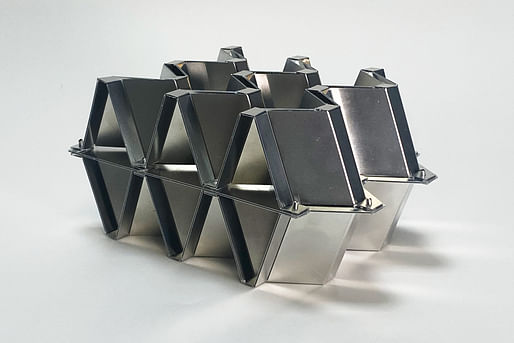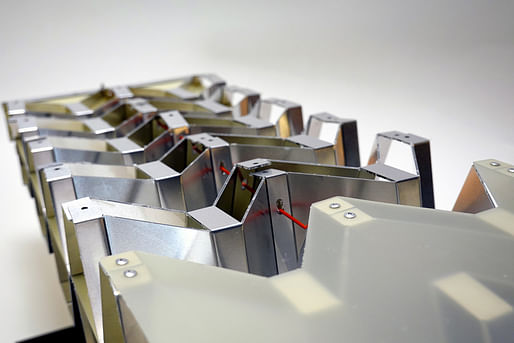
Researchers at MIT have developed a lightweight architected material inspired by the cellular structures found in natural materials such as honeycombs and bones. Produced with techniques borrowed from the Japanese kirigami paper-cutting technique, the strong metal lattices are lighter than cork while also holding customizable mechanical properties.

Using kirigami techniques, the MIT team led by Professor Neil Gershenfeld of the Center for Bits and Atoms has produced plate lattice structures on a larger scale than was previously possible. The structures are described as "steel cork" by Gershenfeld due to their lightweight nature combined with high strength and stiffness.
“To make things like cars and airplanes, a huge investment goes into tooling. This manufacturing process is without tooling, like 3D printing. But unlike 3D printing, our process can set the limit for record material properties,” Gershenfeld said in a statement.

The researchers’ method sees the formation, folding, and assembly of many smaller components into 3D shapes. The resulting ultra-strong and lightweight structures, which can morph and maintain their shape under certain loads, hold potential uses in the architecture, aerospace, and automotive sectors.
To overcome the unique manufacturing complexities of plate lattices, the researchers drew inspiration from the 7th-century Japanese kirigami art form. The team modified a common origami crease pattern, known as a Miura-ori pattern, transforming sharp points into facets. The adjustment simplified the attachment of flat plates to the corrugated core, eliminating the need for strong adhesives or welding. By controlling the design of the folds, the MIT team can also precisely dictate how different areas of the structure will react under pressure.
While the kirigami technique offers significant promise, the MIT researchers acknowledge modeling challenges and are aiming to develop user-friendly design tools for such structures in the future. In the meantime, in a statement of the versatility and aesthetic appeal of their technique, several large-scale artworks using the novel method are currently on display at the MIT Media Lab.
No Comments
Block this user
Are you sure you want to block this user and hide all related comments throughout the site?
Archinect
This is your first comment on Archinect. Your comment will be visible once approved.